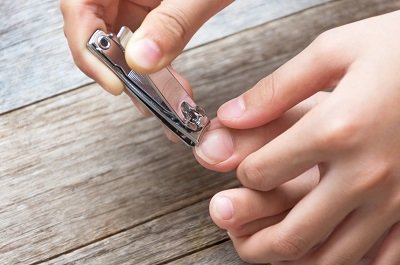How To Treat And Prevent Ingrown Toenails

An ingrown toenail, which at first glance may seem like minor importance, can be very painful. A curiosity: the civilizations that go barefoot have never suffered the incarnation of a nail.
What are the symptoms of an ingrown toenail?
Footwear is, without a doubt, the main reason for an ingrown toenail. If the tip is very narrow, press the big toe and the nail slowly sinks into the skin. The symptoms are manifested by acute pain, localized redness, and swelling. We must be cautious because, from the appearance of the first symptoms, there is a risk of infection. The incarnation of a nail can lead to sacrificing the nail, to the reproduction matrix.
What should you do in the case of an ingrown toenail?
Medical consultation in time allows preserving the nail. There are specialized ingrown nail treatments to reduce inflammation and prevent infection. The podiatrist will insert a neutral body between the nail and the finger in order to break the contact and stop the incarnation. The patient will have to wear shoes as large as possible for several weeks so that the foot has room and ventilate: flip-flops, sneakers or boots with the rather wide tip.
What should you not do?
- Do not cut the nail yourself to isolate the incarnated part: it will continue to sink in the finger anyway.
- Change your shoes for more comfortable ones; Do not open shoes, you’ll have time later.
- Avoid baths too hot.
- Avoid excessive perspiration. Do not play sports during the treatment.
- Say goodbye to the heels until the incarnation has completely healed.
Ingrown Nail Treatment: Practical advice
The ingrown toenail is also known as onychocryptosis it produces pain and usually appears in the big toes. It can be a real headache even if you suffer from ingrown toenail discomfort.
Why do I have an ingrown nail?
The ingrown toenail does not appear overnight, so the sooner the problem is stopped, the less pain the foot will suffer. The causes are very diverse:
- Shoes of poor quality, both too tight and too wide.
- When we cut the toenails too short or with the tips rounded. This cause is prevalent in older people, among other things, due to the lack of vision and movement that results in a bad nail cut.
- Being born with bent nails that accentuate with time and usually comes from family.
- Blows in the feet that produce the crushing and the bad birth of the nail.
At what stage is my nail ingrown?
It can be divided into three different stages of evolution. The earlier it is treated, it will not continue evolving in the following steps.
- The first phase begins with pain, possible swelling, and redness of the skin. In this phase is where the pedicurist can fix an ingrown nail promptly. Sometimes you can spend a lot of time in this phase and move to the second in a short time, only by a domestic hit or stomp.
- The second stage is when there is an evident inflammation, along with infection in the area where the nail is nailed to the meat. When there is already an infection, it is best to go to a podiatrist or the doctor to cure it as soon as possible.
- The third stage is the most painful and the one that takes the longest to heal. It leads to visible deformation and chronic infection. In these cases, the doctor will assess if it would be necessary to intervene with surgery or directly with periodic cures. It could not be treated by a pedicurist but by a podiatrist.
What do I have to do to recover?
Whenever you are at an early stage of the development of an ingrown toenail, there are small homemade tricks that will help improve the state and appearance. The sooner this condition is treated, the less likely there will be significant problems, such as resorting to surgery.
- Avoid tight and closed shoes.
- Use sandals without pressure.
- Cut the nails correctly.
- Do not cut the nail too short.
- The nails should be cut in their proper measure.
- The skin around the nail also needs to be taken care of.
- Wash your feet properly and dry them thoroughly.
Where do I go for my ingrown nail treatment: Podiatrist or pedicurist?
Two types of foot care specialists can improve the ingrown toenail. Podiatrists perform surgeries, and not pedicures. They treat diseases such as infections by fungi or nails infected by various problems. The esthetician or pedicurists perform pedicures and are in charge of the artistic part, although in a timely way they can improve an ingrown nail as long as they have not become infected wounds. It is advisable that you comment when you ask for your appointment so that the specialist can spend more time, without any additional cost.
Depending on how the nail is ingrown, you can go to the two specialists or only the podiatrist. Also, there are risks where having an ingrown toenail can pose more problem, people with diabetes, poor circulation, people undergoing chemotherapy or diseases or medications associated with poor healing make having an ingrown toenail pose an added challenge. Diabetic patients need to follow and make efforts to consult a podiatrist who examines ingrown toenail for diabetes. If it is your case, or know someone close, it is better to go to the doctor and keep him informed of the state and risk of an ingrown nail in your situation.
